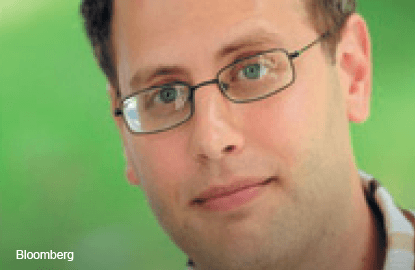
This article first appeared in The Edge Financial Daily, on January 13, 2017.
I still remember going to a graduate student barbecue during my first month at the University of Michigan. I told a woman from another department that I was studying economics, and she asked me: “What school?” Blinking, I replied: “This one. The University of Michigan.”
That was not what she was asking, of course. She wanted to know which tribe of economists I belonged to — the Chicago school, the Austrian school and so on. But to me, the question made no sense, because academic economists in this day and age are not actually divided into warring schools of thought. And it is best that people stopped thinking about economists in those terms.
Look on the Wikipedia pages of economists Joseph Stiglitz and Greg Mankiw or any of a number of prominent economists. On the sidebar on the right, you will see an entry for “school or tradition”. Both Stiglitz and Mankiw are listed as “New Keynesian”. That makes absolutely no sense whatsoever. Stiglitz and Mankiw’s research is in totally different areas. Stiglitz did work on asymmetric information, efficiency wages, land taxes and a host of other microeconomic phenomena. Mankiw’s work is about macroeconomics, monetary policy and the business cycle. Nor are their policy positions even remotely similar — Stiglitz is a hero to the left, while Mankiw is a small-government conservative. In fact, Mankiw did do important research on some models called “New Keynesian”. Stiglitz did not.
This is just one small example. Popular economics is dominated by the idea that the discipline is divided into free-market Austrians and interventionist Keynesians. Observe how web searches for “Keyensian” dwarf the number of searches for “general equilibrium”, one of the most common types of theories in economics (see chart).
This divide was somewhat true in the 1930s, when debates were dominated by figures like John Maynard Keynes, Friedrich Hayek and Ludwig von Mises writing literary treatises about the Great Depression. But today it is complete fantasy. The ideas of the original Austrians have diffused into the academic mainstream, while the few economists who still call themselves “Austrian” are a tiny, vestigial minority working at a couple of locations like the Mises Institute and George Mason University. Meanwhile, the word “Keynesian” is applied to a huge, diverse range of ideas, but few academics would put themselves in that ideological box.
There are many reasons economics is not even slightly about Keynesians versus Austrians anymore. First, most economists do not work in macroeconomics, and to these people the old debates are mostly irrelevant. Second, economics has developed a common language, heavy on math and statistics, that allows researchers to mix and match ideas from the old paradigms.
Yet another example is the Chicago School. Yes, in the mid-20th century, a number of prominent economists at the University of Chicago gathered together and advanced free-market theories. But today, that university includes Austan Goolsbee, who was chairman of the Council of Economic Advisers under President Barack Obama, and Richard Thaler, founder of behavioural economics. The free-market ideas promulgated by the likes of Milton Friedman, George Stigler and other Chicago luminaries of old have diffused into the general economics profession, where they have mixed with and been tempered by other ideas and traditions. The old Chicago School is no more.
There are a few small exceptions to my declaration that economics is no longer divided up among different schools. Small but increasingly vocal numbers of self-described “heterodox” thinkers, usually on the political left, are challenging the mainstream from without. Also, certain fields still have cleavages about important questions — witness the decades-long debate between followers of Eugene Fama and Robert Shiller (who shared a Nobel Prize in 2013) over whether financial markets use information efficiently.
Then there is the divide between so-called freshwater and saltwater macroeconomics. In the 1980s, two groups of macroeconomists split over whether prices in the economy adjust quickly or slowly to changing conditions. The exchanges got very heated. But though that rift never quite healed, it was rendered relatively unimportant when other questions, like the role of the financial system, eclipsed the old debate.
Other than these notable but small exceptions, economics is a remarkably united field. Most theory is done in a single style — mathematical thought experiments about people and companies in the economy trying to achieve some objectives. And most empirical work is done by regression analysis of one sort or another on data. Most of the field is subsumed under the banners of the American Economic Association and the National Bureau of Economic Research, whose mammoth yearly conferences allow ideas to flow freely across the divides of politics and geography.
So I feel like we should put this misconception to rest. The idea of different schools makes the public think that the economics discipline is more divided, and more politicised, than it really is. — Bloomberg